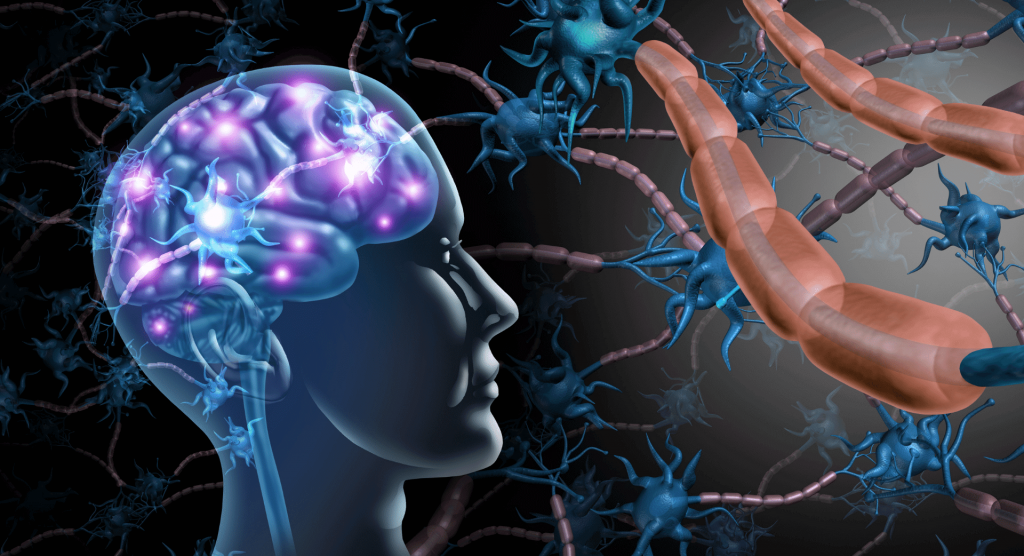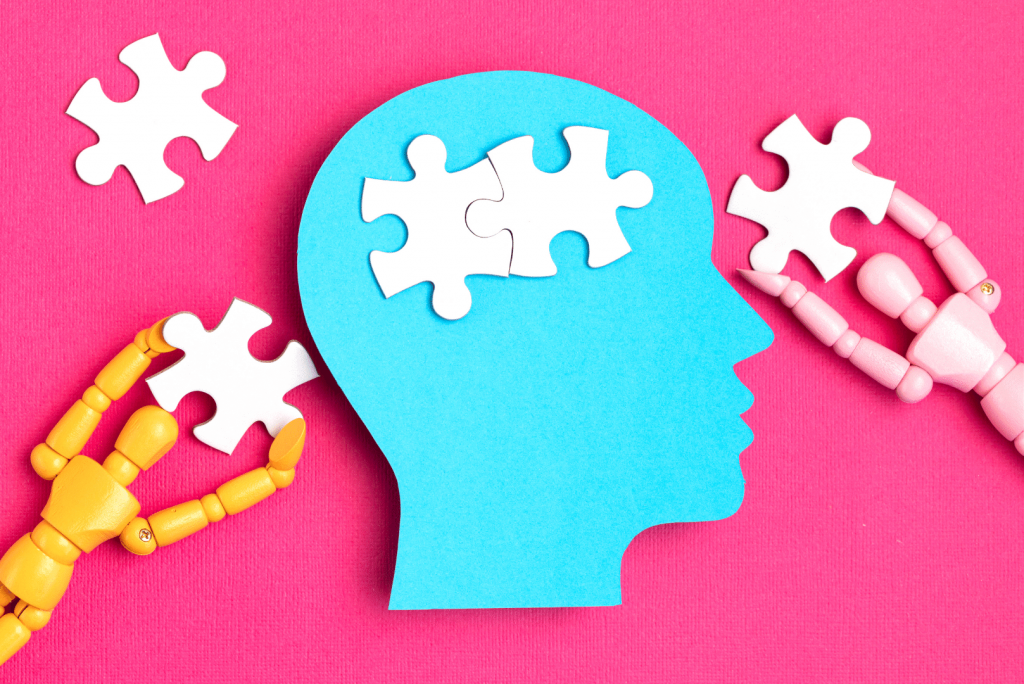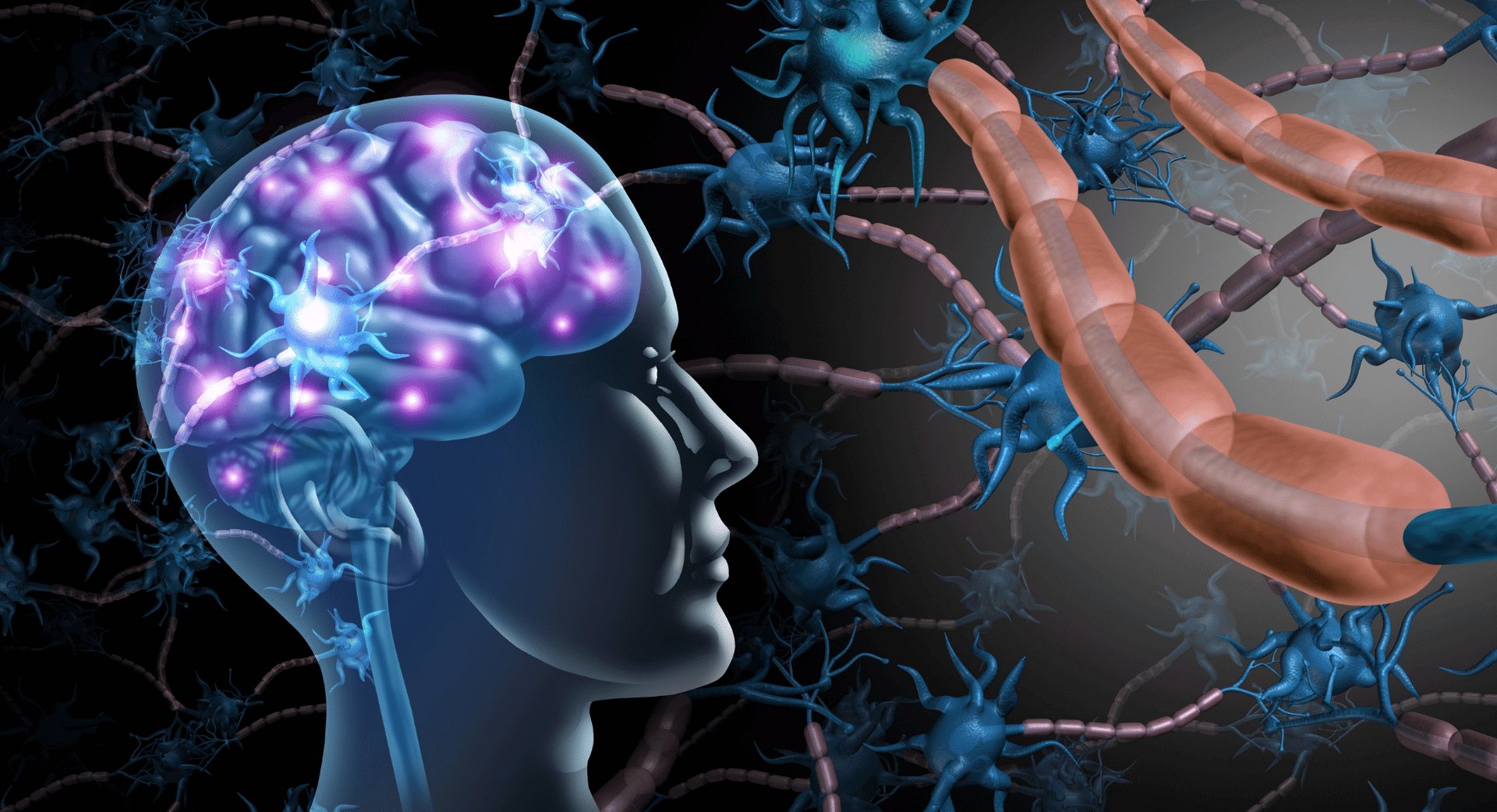Continue reading to find out more about noradrenaline and how to naturally balance your norepinephrine levels.
What Is Noradrenaline And How Is It Made?
Norepinephrine, both a neurotransmitter and hormone, enables different types of cell signaling across the brain and the whole body. The signaling works via adrenergic receptors, and noradrenaline binds to three types of them: alpha-1, alpha-2, and beta-1 receptors (it binds poorly to beta 2 receptors).
Noradrenaline basically comes from tyrosine, an amino acid. It is a non-essential amino acid, which means that your body can produce it (from another amino acid – phenylalanine). Tyrosine can cross the blood-brain barrier, and reach the presynaptic neurons. There, conversion of tyrosine to DOPA takes place, which then becomes dopamine. Your neurons then convert dopamine to noradrenaline.

Roles Of Noradrenaline In The Brain
Mood
Since norepinephrine is a neurotransmitter, its role touches upon many psychological processes, one of them being mood. Many studies demonstrate a clear connection between noradrenergic system dysfunctions and mood disorders.
Functional imaging studies show a change in sensitivity of alpha-2 adrenergic receptors in individuals diagnosed with severe depression. Additionally, noradrenaline transporter proteins have lower binding affinities in depressed patients than in the control group.
Noradrenaline can actually boost your mood. The transmission signal reaches other cells and enables proper cell-to-cell communication. One study included 43 depressed patients to determine the effects of a noradrenergic drug. Participants experienced improvements in 10 symptoms after the treatment, including increased interest and the sense of pleasure.
Keep in mind that depression and other mood disorders involve many contributing factors, and norepinephrine is only one of them. We’re not suggesting that any supplement, including ones that increase norepinephrine, can treat any disease. Every case is different so it’s best to see your physician for diagnosis and treatment.
Attention
You’re so into your work that no external noises can distract you. This is partly because of norepinephrine – it regulates selective attention.
One study focused on noradrenaline’s role in emotional regulation of attention. The study consisted of three experiments, and participants received their doses orally.
The first experiment included 36 individuals (18 women and 18 men). They received either a 100mg placebo pill or 40mg of an adrenergic receptor blocker. Participants performed the Attentional Blink Task 90 minutes after receiving the dose.
The second experiment had 30 participants (15 women and 15 men). The doses that they received were either a 100mg placebo pill, 40mg of the adrenergic receptor antagonist (blocker), or 4mg of a selective noradrenaline reuptake inhibitor (which increases noradrenaline). They did the Attentional Blink Task 120 minutes after receiving the dose.
Lastly, the third experiment involved 30 subjects (15 women and 15 men) which received either a 100mg placebo pill, 20mg of the adrenergic receptor antagonist, or 40mg of an adrenergic receptor antagonist that cannot cross the blood-brain barrier.
The blockage of adrenergic receptors significantly decreased the detection of targets during the test, meaning that attention spans changed when compared to the placebo group.
On the other hand, the selective noradrenaline reuptake inhibitor resulted in enhanced attention compared to the control group.
Lastly, the antagonist that is unable to cross the blood-brain barrier had no effect on attention, just like the placebo pill.
These results demonstrate the importance of noradrenaline in selective attention. Higher noradrenaline levels enable increased focus and attention.

Memory
Noradrenaline is crucial when it comes to memory. A study on domestic day-old chicks investigated the effect of norepinephrine on memory by training them not to peck a specific bead.
The chicks received different injections containing either adrenergic agonists or antagonists. Additionally, injection administration occurred in different time slots (before or after the training). The results revealed the importance of norepinephrine in short, intermediate, and long-term memory formation and maintenance. Increased noradrenaline release correlates with enhanced memory.
A clinical study including 30 women and 30 men researched the role of noradrenaline in arousal-induced memory. Arousal-induced memory is selective: it selects important information related to an outstanding event, while ignoring less important information.
Participants received either 40mg of beta-adrenergic receptor antagonist, or a placebo pill. Individuals that received the antagonist experienced an inhibition in arousal-induced memory, compared to the placebo group. These participants had reduced ability to select important information. This shows that norepinephrine boosts memory linked to arousal.
Sleep And Wakefulness
Noradrenaline also plays an important role in the sleep-wake cycle and feeling energized. During sleep, levels of noradrenaline significantly decrease. This decrease plays a role in dreaming: it allows our brains to process dreams, but reduces the chance of remembering them.
On the other hand, higher levels of noradrenaline correlate with wakefulness. When you wake up in the morning, your noradrenergic neurons activate.
Researchers conducted a study with zebrafish to determine the role of noradrenaline in the sleep-wake cycle. Zebrafish with a mutation in the gene that encodes dopamine beta-hydroxylase (an enzyme that converts dopamine to noradrenaline) produce an inefficient protein. Therefore, they do not produce enough noradrenaline.
These mutants display significantly lower activity when awake, during both daytime and nighttime. Additionally, they sleep 185% more during the day and 57% more during the night than the wildtype control group.
Executive Function
Executive function includes the working memory, attention, impulse control, and cognition, among other processes. The effects of norepinephrine touch all aspects of the executive function.
These connections occur because norepinephrine regulates arousal and cortical activity during executive function performance. And, since noradrenergic receptor activation depends on the arousal level, noradrenaline has a role in balancing the cognitive processes that contribute to the executive function.
Noradrenaline enables task switching. In the case of low noradrenaline activity, you may struggle to switch between different tasks.
On the other hand, higher norepinephrine activity correlates with an enhancement in reversal learning. The basis of this model is learning to make a discrimination, and then reversing the choice. For example, an individual learns to select for black color in a black-white task, and then learns to choose white instead of black color in the same task type. Additionally, high noradrenaline relates to the ability to inhibit the response to distractions.

Fight Or Flight Response
The ‘fight or flight response’ makes our body prepared for stressful or dangerous situations. As the name itself suggests, it either makes us ready to fight the danger, or flee away from it.
Norepinephrine, along from the adrenal medulla, comes from sympathetic nerve endings and triggers certain changes within our bodies during dangerous events. During these situations, norepinephrine levels rise.
This increase in noradrenaline induces higher cardiac output, relaxes smooth muscle tissue, and increases blood glucose and fatty acid levels. All of these enable us to have enough energy and an appropriate physiological state to respond to danger.
Roles Of Noradrenaline Outside The Brain
Noradrenaline is also a hormone. Its secretion from the adrenal gland induces different physiological changes via blood transport.
Blood Pressure Regulation
A study on conscious and anesthetized cats focused on the role noradrenaline plays in blood pressure control. Administration of noradrenaline resulted in increased blood pressure. Furthermore, the study highlighted the mechanism of action of alpha and beta adrenoreceptors. Alpha receptors possess both excitatory and inhibitory action, while beta receptors are of excitatory nature. They are an important part of the central blood pressure control.
Another study focused on humans and the importance of the noradrenaline transporter (NET) gene. A total of 92 individuals diagnosed with resistant hypertension participated. NET inactivates noradrenergic signaling by taking up the released noradrenaline.
A single nucleotide polymorphism in the NET gene correlates with higher norepinephrine levels in the plasma. This contributes to the resistant hypertension.
Stress Response
Stress response is finely tuned with several physiological mechanisms. Similarly, noradrenaline plays a role in stress response.
The central dogma of the stress response is increased noradrenaline release. Arousal-induced memory, or fear memory, only works with high levels of noradrenaline. Prolonged and repeated stress situations lead to symptoms of anxiety, caused by high norepinephrine levels.
Fat Burning (Lipolysis)
Norepinephrine correlates with fat burning. In adipose tissue, for example, noradrenaline induces lipolysis, as well as enhanced blood flow. This is not the case for all tissues. In skeletal muscle, noradrenaline just decreases the blood flow, but has no effect on lipolysis.
Furthermore, dopamine and noradrenaline reuptake inhibition might have an effect on mild weight loss. Bupropion is the reuptake inhibitor for both noradrenaline and dopamine.
In one study, mice received daily doses of it for 7 days. Inhibition of norepinephrine and dopamine reuptake (which increases noradrenaline and dopamine) resulted in increased energy expenditure. However, the mice didn’t eat more, move more, or produce more heat. The combination of these consequences lead to mild weight loss.
Neurotransmitters That Balance Noradrenaline
Since norepinephrine comes from dopamine, we can conclude that dopamine balances norepinephrine production. However, some aspects of these two neurotransmitters counteract each other. For example, in a difficult feat that requires tenacity, the reward from dopamine may keep you going, while noradrenaline tempts you to quit.
Our brain constantly seeks balance. Thus, when dopamine levels are too low or too high, the brain leans towards an optimum amount.
Therefore, too high dopamine levels might lead to too high noradrenaline levels.

Signs Of Too High/Too Low Noradrenaline
Noradrenaline controls wakefulness, attention, and many other physiological functions.
Here are some signs of too high levels of noradrenaline:
- High blood pressure. We need high blood pressure in dangerous situations. However, hypertension might occur if noradrenaline levels are always too high.
- Hyperactivity. Norepinephrine induces wakefulness and makes you feel energized. Too much noradrenaline can lead to hyperactivity and insomnia.
- Panic attacks. When noradrenaline levels are high, arousal and alertness peak. Prolonged and too much alertness might cause panic attacks.
- Euphoria.
- Excess sweating.
- Irregular heartbeat
Signs that noradrenaline is too low:
- Lack of energy. Noradrenaline influences wakefulness and regulates the sleep-wake cycle. If noradrenaline is too low, you may feel tired.
- Bad mood. Low amounts of norepinephrine correlate with inability to transmit the necessary signals properly. The result can be low mood and a lack of motivation and enthusiasm.
- Inability to pay attention and focus. Many studies found that low norepinephrine levels make it hard to focus.
Natural Ways To Increase Noradrenaline
1. Healthy Sleep Habits
Noradrenaline is an important part of the sleep-wake cycle. If you balance your cycle, your noradrenaline levels will likely follow the same trend.
Getting enough quality sleep is crucial for waking up refreshed and full of energy. Optimize your sleep schedule to increase your noradrenaline levels in the morning.
2. Tyrosine Or Dopamine Rich Foods
Tyrosine, and thus dopamine, are norepinephrine precursors. Utilizing tyrosine and dopamine rich foods in your diet will help to increase your noradrenaline levels.
Some of the foods rich in tyrosine and/or dopamine are:
- Chocolate
- Bananas
- Peanuts
- Yogurt
You can also turn to tyrosine supplements. N-acetyl L-tyrosine (amino acid with an acetyl group added, also called acetyl L-tyrosine) boosts dopamine and norepinephrine levels. N-acetyl L-tyrosine can better enter the brain than tyrosine and provides the building blocks for dopamine and noradrenaline. However, by providing building blocks, it tends not to have the same effects as drugs that block the reuptake of these neurotransmitters.
3. Caffeine
Caffeine is a central nervous system stimulant, meaning that it increases alertness and focus. The possible underlying mechanism of this could be noradrenaline.
One study involved 24 healthy individuals. There were 4 groups:
- Clonidine/caffeine
- Clonidine/placebo
- Placebo/caffeine
- And placebo/placebo
The clonidine doses were 200 micrograms, and the caffeine doses were 1.5 mg/kg. Clonidine is an alpha receptors agonist, and therefore reduces norepinephrine levels.
The consumption on clonidine impaired alertness, reduced blood pressure, and significantly reduced eye movement and some performance aspects. On the other side, caffeine fixed many of these reductions and impairments. It increased alertness, eye movement, and blood pressure. The results suggest that caffeine has its effects due to the noradrenergic pathways and the increase in plasma noradrenaline levels.
4. Exercise
Physical activity can increase your noradrenaline levels as it globally boosts all neurotransmitters in a balanced manner.
One study included 6 men who performed exercise with one leg, while the other leg rested. The exercise lasted for 10 minutes. The blood results showed that noradrenaline levels were significantly higher in the exercising leg when compared to the resting one.

5. Vagus Nerve Stimulation
One study involved 31 rats. The left side of the vagus nerve in the study group received a stimulus, and corresponding norepinephrine levels released in the amygdala were recorded. This lasted for approximately 2 hours, and the collection of the brain fluid samples occurred every 20 minutes.
After the first 20 minutes, noradrenaline levels significantly increased (71% higher). This increase was even more prominent at the end of the stimulation, where noradrenaline levels were 128% higher than the original physiological levels. No changes occurred in the control group who did not receive a vagus nerve stimulus.
6. Rhodiola Rosea
This adaptogenic herb helps to balance norepinephrine levels with the regulation of the stress response.
A rat study dealt with obese animals and the potential of R. rosea to help the weight loss. The combination of Citrus aurantium and Rhodiola rosea showed 10.5% lower feeding need in rats when compared to the control group. Furthermore, this administration resulted in increased norepinephrine levels (15% higher) and dopamine levels (150% higher) in the hypothalamus.
7. Phenylethylamine
Beta-phenylethylamine is an amine that influences noradrenaline levels indirectly. Specifically, phenylethylamine increases dopamine levels in neural synapses. Noradrenaline comes from dopamine, so higher dopamine levels may lead to an increase in noradrenaline levels.
Natural Ways To Decrease Noradrenaline
1. Healthy Stress Processing
Stress causes norepinephrine release. Therefore, when you’re really under a lot of stress, your norepinephrine levels tend to peak. However, chronic stress leads to lower noradrenaline levels due to reduced sensitivity of the stress-response system.
Avoiding stress completely is impossible. Instead, healthy stress processing will help with a lot of imbalances, as well as norepinephrine levels.
Healthy ways to manage stress, such as meditation and self-care, can help lower your adrenaline to healthy levels.
2. Melatonin
Since noradrenaline is very important for the sleep-wake cycle, and especially wakefulness, melatonin can produce the opposite effect.
Higher levels of melatonin will suppress noradrenergic receptors, and induce sleepiness.
3. Green Tea
A rat study investigated the effect of green tea on the secretion of noradrenaline. Rats received 50mg/kg body weight of the green tea extract for 10 weeks. Noradrenaline levels in these rats significantly decreased.
Norepinephrine really does play a central role in some physiological mechanisms. Keeping your noradrenaline levels in balance applies to many health benefits, like attention, healthy sleep patterns, and executive function.
Have you considered optimizing your noradrenaline and dopamine levels to support your focus, motivation, and mood?
Nootopia’s personalized nootropics support all neurotransmitters, including noradrenaline, naturally and in a balanced manner. We do so by providing building blocks for your body to make its own neurotransmitters, so the effects are very gentle and there are no side effects.
Click here to learn more about Nootopia stacks.
Note: Our products are not approved to treat or cure any disease and this article is meant for educational purposes only. We include the drug studies in this article as they demonstrate the functions of noradrenaline, but our products are not these drugs and are only intended for optimizing cognitive functions in healthy people. Please see your physician about treating and diagnosing diseases, especially with medications.
References:
- Pitt cardiology. Pittmedcardio.com. Accessed October 27, 2022. http://pittmedcardio.com/norepinephrine.html
- Hussain LS, Reddy V, Maani CV. Physiology, Noradrenergic Synapse. In: StatPearls [Internet]. StatPearls Publishing; 2022.
- Brunello N, Blier P, Judd LL, et al. Noradrenaline in mood and anxiety disorders: basic and clinical studies. Int Clin Psychopharmacol. 2003;18(4):191-202. doi:10.1097/00004850-200307000-00001
- Moret C, Briley M. The importance of norepinephrine in depression. Neuropsychiatr Dis Treat. 2011;7(Suppl 1):9-13. doi:10.2147/NDT.S19619
- Nelson JC, Mazure C, Quinlan DM, Jatlow PI. Drug-responsive symptoms in melancholia. Arch Gen Psychiatry. 1984;41(7):663-668. doi:10.1001/archpsyc.1984.01790180033004 [/custom-reference]
- De Martino B, Strange BA, Dolan RJ. Noradrenergic neuromodulation of human attention for emotional and neutral stimuli. Psychopharmacology (Berl). 2008;197(1):127-136. doi:10.1007/s00213-007-1015-5
- Gibbs ME, Hutchinson DS, Summers RJ. Noradrenaline release in the locus coeruleus modulates memory formation and consolidation; roles for α- and β-adrenergic receptors. Neuroscience. 2010;170(4):1209-1222. doi:10.1016/j.neuroscience.2010.07.052
- Hauser TU, Eldar E, Purg N, Moutoussis M, Dolan RJ. Distinct roles of dopamine and noradrenaline in incidental memory. J Neurosci. 2019;39(39):7715-7721. doi:10.1523/JNEUROSCI.0401-19.2019
- Gottesmann C. The involvement of noradrenaline in rapid eye movement sleep mentation. Front Neurol. 2011;2:81. doi:10.3389/fneur.2011.00081
- Mitchell HA, Weinshenker D. Good night and good luck: norepinephrine in sleep pharmacology. Biochem Pharmacol. 2010;79(6):801-809. doi:10.1016/j.bcp.2009.10.004
- Singh C, Oikonomou G, Prober DA. Norepinephrine is required to promote wakefulness and for hypocretin-induced arousal in zebrafish. Elife. 2015;4:e07000. doi:10.7554/eLife.07000
- Logue SF, Gould TJ. The neural and genetic basis of executive function: attention, cognitive flexibility, and response inhibition. Pharmacol Biochem Behav. 2014;123:45-54. doi:10.1016/j.pbb.2013.08.007
- Tank AW, Lee Wong D. Peripheral and central effects of circulating catecholamines. Compr Physiol. 2015;5(1):1-15. doi:10.1002/cphy.c140007
- Day MD, Poyser RH, Sempik J. Effects on blood pressure of noradrenaline and isoprenaline administered into the third ventricle of the brain of anaesthetized and conscious cats. J Auton Pharmacol. 1980;1(1):37-43. doi:10.1111/j.1474-8673.1980.tb00439.x
- Eikelis N, Marques FZ, Hering D, et al. A polymorphism in the noradrenaline transporter gene is associated with increased blood pressure in patients with resistant hypertension. J Hypertens. 2018;36(7):1571-1577. doi:10.1097/HJH.0000000000001736
- Seki K, Yoshida S, Jaiswal MK. Molecular mechanism of noradrenaline during the stress-induced major depressive disorder. Neural Regen Res. 2018;13(7):1159-1169. doi:10.4103/1673-5374.235019
- Quisth V, Enoksson S, Blaak E, Hagström-Toft E, Arner P, Bolinder J. Major differences in noradrenaline action on lipolysis and blood flow rates in skeletal muscle and adipose tissue in vivo. Diabetologia. 2005;48(5):946-953. doi:10.1007/s00125-005-1708-4
- Billes SK, Cowley MA. Catecholamine reuptake inhibition causes weight loss by increasing locomotor activity and thermogenesis. Neuropsychopharmacology. 2008;33(6):1287-1297. doi:10.1038/sj.npp.1301526
- Tsirlin A, Oo Y, Sharma R, Kansara A, Gliwa A, Banerji MA. Pheochromocytoma: a review. Maturitas. 2014;77(3):229-238. doi:10.1016/j.maturitas.2013.12.009
- Zuber SM, Kantorovich V, Pacak K. Hypertension in pheochromocytoma: Characteristics and treatment. Endocrinol Metab Clin North Am. 2011;40(2):295-311. doi:10.1016/j.ecl.2011.02.002 [/custom-reference]
- Fitzgerald PJ. Elevated norepinephrine may be a unifying etiological factor in the abuse of a broad range of substances: Alcohol, nicotine, marijuana, heroin, cocaine, and caffeine. Subst Abuse. 2013;7:171-183. doi:10.4137/SART.S13019
- Hase A, Jung SE, aan het Rot M. Behavioral and cognitive effects of tyrosine intake in healthy human adults. Pharmacol Biochem Behav. 2015;133:1-6. doi:10.1016/j.pbb.2015.03.008 [/custom-reference]
- Smith A, Brice C, Nash J, Rich N, Nutt DJ. Caffeine and central noradrenaline: effects on mood, cognitive performance, eye movements and cardiovascular function. J Psychopharmacol. 2003;17(3):283-292. doi:10.1177/02698811030173010
- Savard G, Strange S, Kiens B, Richter EA, Christensen NJ, Saltin B. Noradrenaline spillover during exercise in active versus resting skeletal muscle in man. Acta Physiol Scand. 1987;131(4):507-515. doi:10.1111/j.1748-1716.1987.tb08270.x
- Aldenson R. Stimulating the vagus nerve: memories are made of this. Apa.org. Published 2004. Accessed October 27, 2022. https://www.apa.org/monitor/apr04/vagus
- Verpeut JL, Walters AL, Bello NT. Citrus aurantium and Rhodiola rosea in combination reduce visceral white adipose tissue and increase hypothalamic norepinephrine in a rat model of diet-induced obesity. Nutr Res. 2013;33(6):503-512. doi:10.1016/j.nutres.2013.04.001
- Hossain M, Wickramasekara RN, Carvelli L. β-Phenylethylamine requires the dopamine transporter to increase extracellular dopamine in Caenorhabditis elegans dopaminergic neurons. Neurochem Int. 2014;73:27-31. doi:10.1016/j.neuint.2013.10.010
- Goddard AW, Ball SG, Martinez J, et al. Current perspectives of the roles of the central norepinephrine system in anxiety and depression. Depress Anxiety. 2010;27(4):339-350. doi:10.1002/da.20642
- Elseweidy, Mohamed M., Atef E. Abd El-Baky, and Ahmed Abdullah. Effect of green tea catechins intake on brain pattern of certain neurotransmitters in Stz diabetic rats. Published online 2008:515-518.
